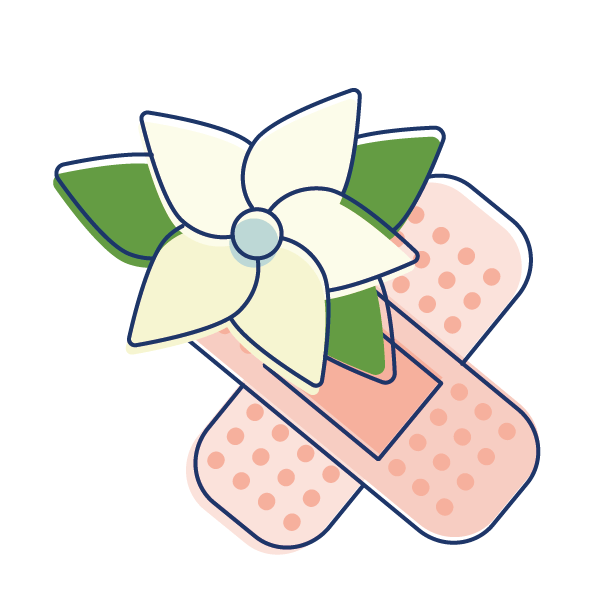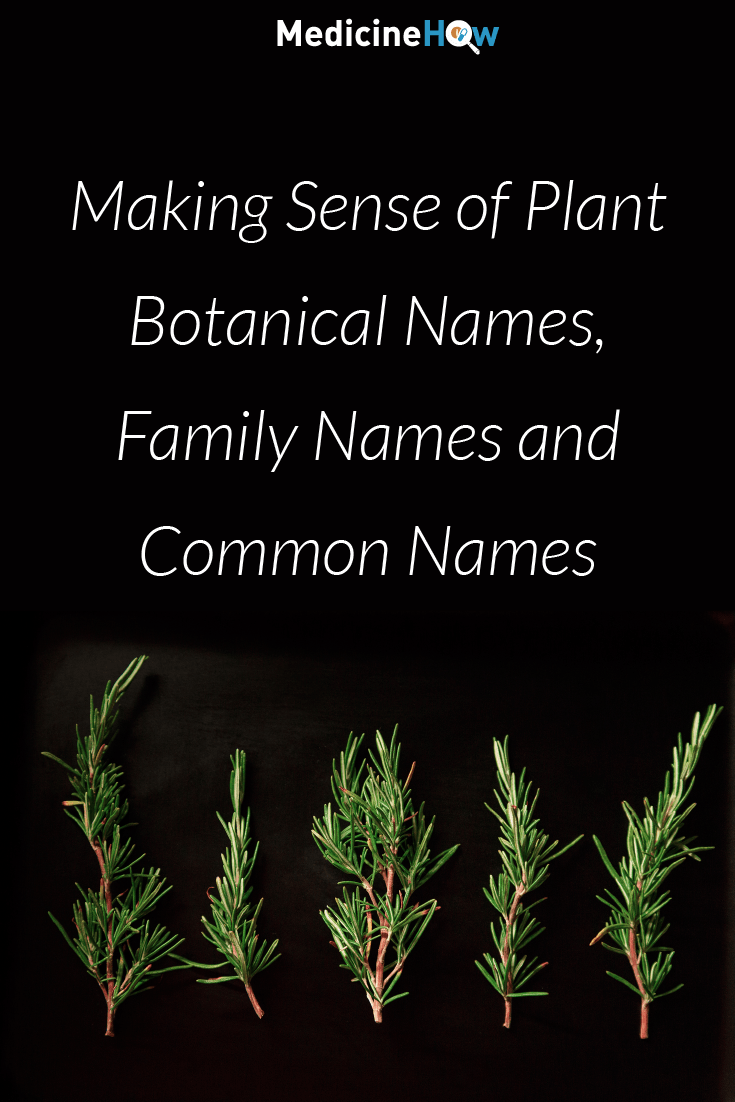
Plants often have many different names, which can make talking about them with other people confusing. There are botanical names, common names and family names, in addition to other names used in certain types of herbal medicine such as traditional chinese medicine and Ayurveda medicine.
How are you supposed to make sense of it all?
Once you understand the basics, it’s actually quite simple. I’m currently working through the Herbal Materia Medica Course by The Herbal Academy, and have learned a lot about naming plants and how to describe their different properties. Since I’ve got so much out of it, I thought it would be helpful to share some of the main insights from the course with you.
This post contains affiliate links. If you purchase a product after clicking on the link, we will receive a commission at no extra cost to you. Thanks for your support!
What is Materia Medica?

Materia medica simple means “healing materials” in Latin. In practice, it’s a body of knowledge that describes how different plants can be used for healing purposes.
NOTE: Are you interested in making your own Materia Medica to record your findings as you learn more about different plants? I highly recommend this course to show you how to get started.
What is an Herbal Monograph?
A monograph is a detailed description of a single subject, originating from the Greek words mono (single) and grapho (to write). In a materia medica, a herbal monograph describes the specific properties of one single plant.
The information to compile a monograph in a materia medica can come from various different places, such as:
- Personal observations and experience
- Knowledge from other people or herbal teachers
- Historical or modern herbal texts
- Scientific research studies
Here’s an example of an herb monograph.
Botanical Name of Plants
Each plant has one botanical name that sets it apart from other plants. The botanical name of a plant is universal, which means that you can refer to specific plants to other people even if you don’t speak the same language.
There are two parts to a botanical name: the genus and the species. The genus is written first with a capital letter and the species is second without a capital letter. The entire botanical name is usually written in italics to set it apart from other text when written down.
For example, the botanical name of English lavender is Lavandula angustifolia. Lavandula (the genus) is written with a capital letter, whereas angustifolia (the species) is written all in lower case.

Often when several different plants with the same genus are listed together, the genus can be shortened to the single capital letter. It might look something like this: Rosa rugosa, R. gallica, and R. canina.
To simplify things even further, to write several species of a certain genus without specifying which species you can use the shorthand “Spp.” It might look something like this: Rosa spp.
Finally some plants may have a third name after the botanical name, particularly for plants that have been selectively bred for specific purposes of qualities. This might look something like this: Lavender angustifolia “Munstead”.
Common Names of Plants
Each plant often has several different common names. This is because the common name is how the plant is referred to in everyday conversations, and the references are often different all over the world. The names often come from certain characteristics of the plant or the ways that they are used.
As an example, Achillea millefolium is the botanical name of a plant with many different common names, which include:
- Yarrow
- Old man’s pepper
- Soldier’s woundwort
- Staunchweed (because it can be used to staunch bleeding from wounds)
- Little feather (because it has a feathered nature)
Botanical Plant Families
Plant families are used to sort plants with similar features, such as the shape of the leaves, flowers and the way seeds are formed, into groups. Each plant fits into a group and has a botanical family.
There are many different botanical plant families such as:
- Apiaceae (parsley family): have hollow stalks and an umbel, which is an umbrella-shaped cluster of flowers. Parsley, wild carrot and angelica are examples of plants in this family.
- Asteraceae (sunflower family): have flowers with disc-shaped or sunflower-like petals. Chamomile, ox-eye daisy, yarrow, dandelion, ragweed and Echinacea are examples of plants in this family.
- Brassicaceae (mustard family): have skinny seed pods, flowers with four petals and a slightly funky smell. Shepherd’s purse, watercress, mustard, cabbage and broccoli are examples of plants in this family.
- Fabaceae (pea family): have seeds in pods and paired leaves along the stem. Clover, mimosa, senna, licorice and kudzu are examples of plants in this family.
- Lamiaceae (mint family): have leaves that grow opposite one another on square stalks and are rich in volatile oils. Motherwort, catnip, bee balm, lemon balm and peppermint are examples of plants in this family. Here’s some more information about the mint family.
- Liliaceae (lily family): have roots that develop into bulbs or corns and flowers with parts in threes. Solomon’s seal, trillium, onions, chives and aloes are examples of plants in this family.
- Malvaceae (mallow family): produce a slimey texture when the leaves are crushed. Marshmallow, hibiscus and okra are examples of plants in this family.
- Rosacea (rose family)
It is useful to know which family a certain plant belongs to because plants in the same family often have similar actions or uses as well. However, this isn’t always the case, which is why we need to specific the different genus and species as well.
Traditional Chinese Medicine (TCM) and Ayurvedic Names
In addition to the botanical name, common names and family name, many plants also have specific names in traditional chinese medicine or Ayurvedic medicine. This is because these plants have historically been used in these medical practices and have names to describe them in these regions.
For plants that are commonly used in Eastern herbalism or the traditional healing system of India, the TCM or Ayurvedic names are also usually included in the herbal monograph of a materia medica so that they can be recognized when researching about the plant.
Learn More About Plant Names and Making Your Own Materia Medica

As you can see, I’ve clearly learned a lot about plant names and writing a material medica already from taking the Herbal Materia Medica Course by The Herbal Academy. In fact, this post is basically a summary of my notes from just the first lesson (there are SIX informative lessons in total in the mini-course!)
I’ve genuinely found the course helpful to get a better understanding of herbal medicine and the properties of different plants. If you’re interested in finding out more – or enrolling to learn alongside me – you can register for the course below.
Pin it!




